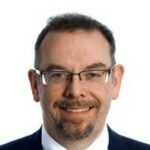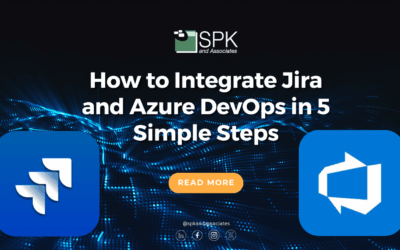In April 2022, PTC acquired Intland Software, the maker of CodeBeamer and CodeBeamer X. Codebeamer is an excellent tool for global leaders and innovators in regulated industries like Medical Devices. Its core purpose is to simplify product engineering and assist in the delivery of high-quality manufacturing. Both solutions present open systems with easy-to-adapt workflow templates to help make products faster, more cost-effectively, and of higher quality.
Worldwide, and across a broad spectrum of industrial manufacturing sectors, leaders and innovators use CodeBeamer. But what opportunities and challenges do CodeBeamer and CodeBeamer X present?
What Is CodeBeamer and CodeBeamer X?
CodeBeamer is a native web-based Application Lifecycle Management (ALM) platform. Additionally, it has support for running in Cloud environments including:
- AWS
- Microsoft Azure
- Docker containers
And, CodeBeamer is highly configurable. In fact, Intland claims it is targeted at safety-critical and high-reliability industries such as:
- Automotive
- Aerospace
- Medical Device manufacturers
CodeBeamer has a strong architecture as you can see in the picture below. Furthermore, its cousin, CodeBeamer X is well-positioned as an Engineering Lifecycle Management (ELM) platform. It extends the reach of CodeBeamer to facilitate software-driven development with regulatory-driven process templates.

Both CodeBeamer and CodeBeamer X address delivering manufactured products faster and more efficiently. They do this via unique digital workflows. Also, Innovators in MedTech and other advanced technology sectors use CodeBeamer X to comprehensively connect people, roles, and processes.
CodeBeamer Artifacts
The primary container and access control mechanism for artifacts and activities is the Project. This will be familiar to RV&S users.
CodeBeamer also provides the following artifact classes for each Project within the system:
-
-
- Wiki. Based on OSS JSPWiki.
- Trackers. This is the equivalent of RV&S Item types.
- Documents. For example, uploaded files.
- SCM repositories. Git, Mercurial and Subversion (SVN) are supported.
-
Tracker Overview
CodeBeamer Trackers are the foundation for managing activities and work products with traceability. A Tracker corresponds to an Item type in RV&S, or a database (DB) table. Tracker items correspond to an RV&S item or a row in the DB table.
A CodeBeamer Tracker defines a class of Tracker Items. It consists of:
-
- The Tracker classification. Such as the Work item, Configuration Item, or Source Code.
- The structure. For example, Fields and their layout.
- Behavior. Including permissions, workflow, computed expressions and constraint rules.
- Associations. Such as ad-hoc dependencies or relationships to other entities like Documents or SCM data.
- Views. The default views are Table, Document, and Cardboard.
- Relations to other items.
Tracker Inheritance in CodeBeamer
Furthermore, Trackers can inherit from other Trackers. For example, each Tracker definition can be flagged as being a Template for the creation of other Tracker definitions. Inheritance can be:
-
-
- Dynamic – This means that changes in the parent Tracker affect child Trackers.
- Static – For example definitions are copied at the time of the creation of the new Tracker.
-
CodeBeamer Tracker vs PTC Windchill RV&S Item Type
Firstly, Tracker workflow definition is more cumbersome than RV&S:
-
-
- Rather than a graphical editor, state transitions are defined in a table.
- For each state transition, permitted Participants or Roles must be defined. For comparison, RV&S provides a default of ‘everyone’. CodeBeamer has no default.
-
Secondly, the Tracker layout is much less configurable than RV&S Item type layout. With Trackers, you specify the field sequence. And for each field, whether it takes up one-third, one-half, or the entire width of the Tracker item display. Trackers provide very constrained support for logo display and color or font settings via CSS.
Finally, Tracker workflow diagrams are definitely clunkier than RV&S Item type workflow diagrams. And, they don’t indicate which transitions a user can make.
Tracker Workflow Diagram:
Tracker Field Types
CodeBeamer Trackers support the following field types:
-
-
- Text & WikiText
- Wiki Link / URL
- Numbers (Integer or Decimal)
- Bool (equivalent to RV&S Logical)
- Choice (equivalent to RV&S Pick)
- User
- Reference (equivalent to RV&S IBPL, also acts as their Relationship field)
- Duration
- Date
- Color
- Table
-
Most field types support computed expressions.
Tracker Document View
For certain types of Trackers, CodeBeamer supports a Document View. This displays the set of Tracker items of that type in a multi-paned tabular view (Outline, Details, and optionally, a third “Tested By” panel). This is similar to the RV&S Document View.
However, CodeBeamer does not have an equivalent to the first-class Document objects that RV&S does. The Document View in CodeBeamer basically limits users to one “document” for each Tracker type within a Project.
Still, CodeBeamer does have an equivalent to RV&S relationship views, and document differencing.
Is CodeBeamer Good for ALM?
Yes, absolutely. CodeBeamer is one of the best all-in-one solutions on the market for ALM and ELM. However, the challenges lie within the initial Project set-up. Once these cumbersome steps are completed, the software provides everything a leading, innovative manufacturer needs. This is why you should consult with experienced professionals such as SPK and Associates in order to configure your system to avoid challenges in the future usage of the product.
Conclusion
Whilst some functionality, like the primary container and control access mechanism, may feel familiar to RV&S users, there are stark differences. For example, state transitions are defined by a table versus a geographical editor.
For manufacturers working in highly-regulated industries such as MedTech, both CodeBeamer and PTC Windchill RV&S provide excellent functionality. If you need further support and guidance on which platform is best for your regulated environment, contact us here.







